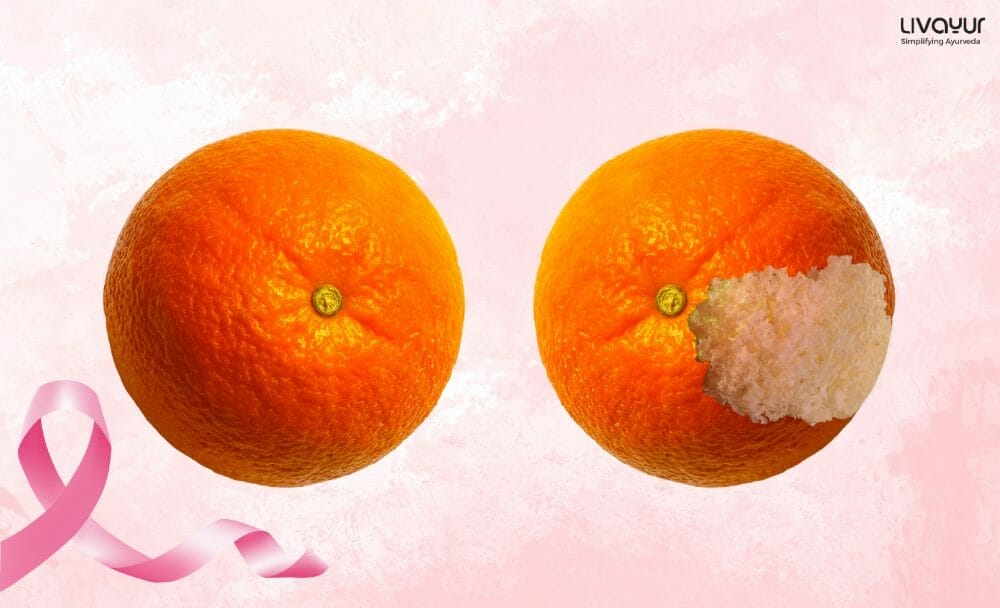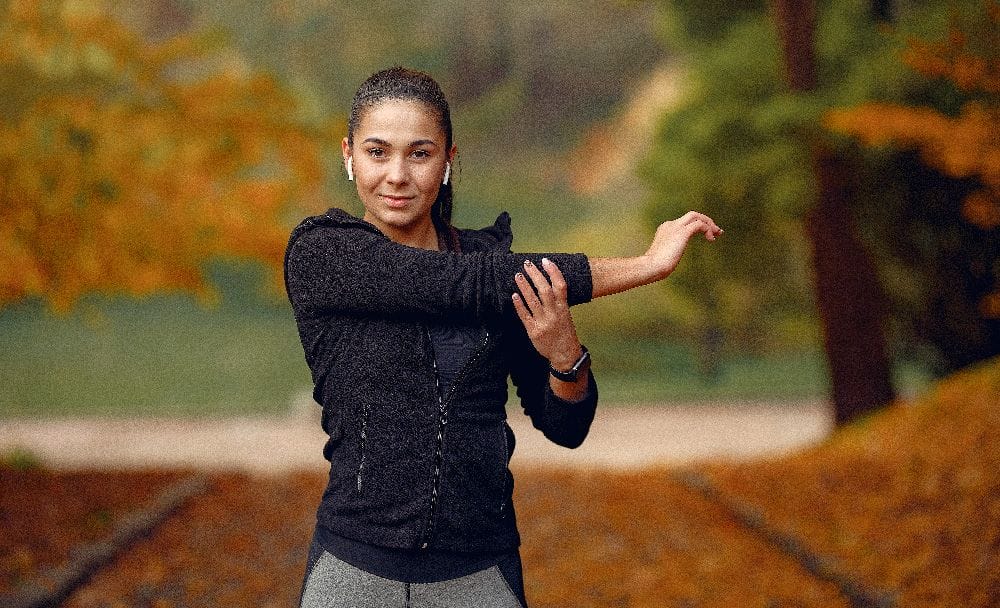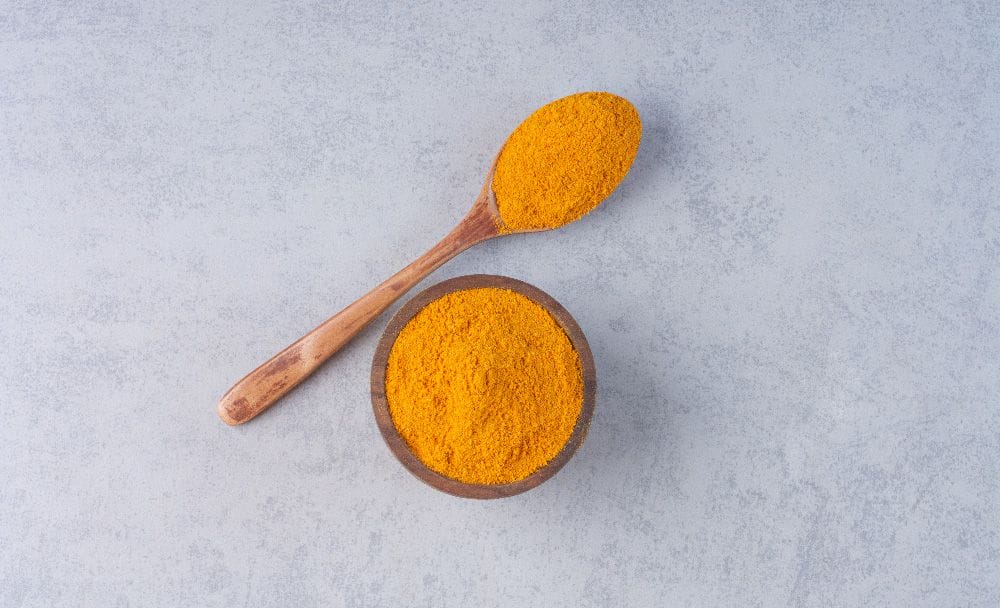This article is reviewed by an expert

Breast cancer is one of the most common types of cancer that affects women globally. It occurs when abnormal cells in the breast tissue grow uncontrollably, forming a lump or mass. Breast cancer can affect both men and women, but it is more common in women [1]. Oftentimes, the symptoms of breast cancer do not surface until it’s too late. Most women discover they have breast cancer only after they are screened. Some early signs of breast cancer include nipple discharge, a change in breast shape or size, or a breast lump. If you are experiencing any of these symptoms, it is advisable to consult a medical professional.
In this article, we will provide an overview of breast cancer, its symptoms, causes, diagnosis, prevention, and treatment options.
Overview of Breast Cancer
Breast cancer is a type of cancer that starts in the cells of the breast tissue. It can begin in different parts of the breast, such as the ducts that carry milk to the nipple, the lobules that produce milk, or the connective tissue that surrounds the breast. These cells form a tumor that can be felt as a lump in the breast. Breast cancer can spread to other parts of the body through the lymphatic system or bloodstream. There are several types of breast cancer, including ductal carcinoma, lobular carcinoma, inflammatory breast cancer, and Paget’s disease of the nipple.[1] [2] According to Ayurveda, breast cancer is caused by an imbalance in the three doshas, particularly the Kapha dosha.[3]
Breast Cancer Symptoms
The most common symptom of breast cancer in women is a lump or mass in the breast tissue. However, not all breast lumps are cancerous, and some women may not have any lumps but still have breast cancer. Other symptoms of breast cancer in women include:[1] [2]
- Swelling or thickening of the breast
- Nipple discharge (other than breast milk)
- Changes in the size or shape of the breast
- Dimpling or puckering of the breast skin
- Redness or scaling of the nipple or breast skin
- Pain or tenderness in the breast or nipple
It is important to note that these symptoms can also be caused by other conditions, such as infections or benign (non-cancerous) breast lumps. However, if you notice any of these symptoms, it is important to see your healthcare provider for an evaluation.[1] [2]
What Are The Causes of Breast Cancer?
The exact cause of breast cancer is not known, but several factors can increase a woman’s risk of developing the disease. These risk factors include:[4]
- Age: The risk of breast cancer increases as women get older.[4]
- Gender: Breast cancer is more common in women than in men.[4]
- Family history: Women who have a close relative (such as a mother, sister, or daughter) who has had breast cancer are at higher risk of developing the disease themselves.[4]
- Genetic mutations: Certain genetic mutations (such as BRCA1 and BRCA2) can be causes of breast cancer.[4]
- Hormonal factors: Women who have started their periods at a younger age or have late menopause are at a higher risk of developing breast cancer.[4]
- Reproductive history: Women who have never been pregnant or who had their first child after age 30 are at higher risk of developing breast cancer.[4]
- Lifestyle factors: Being overweight or obese, drinking alcohol, and not getting enough exercise can increase the risk of breast cancer.[4]
Diagnosis of Breast Cancer
Breast cancer is usually diagnosed through a combination of physical examination, imaging tests, and biopsy (removal of a sample of breast tissue for testing). If your healthcare provider suspects breast cancer, they may order one or more of the following tests:[1] [2] [5]
- Mammogram: A mammogram is an X-ray of the breast tissue. It can detect lumps or masses that may be too small to feel. [1] [2] [5]
- Ultrasound: An ultrasound uses sound waves to create images of the breast tissue. It can help determine whether a lump is solid or filled with fluid(usually non-cancerous). [1] [2] [5]
- MRI: An MRI (magnetic resonance imaging) uses radio waves and magnets to create detailed images of the breast tissue. [1] [2] [5]
- Biopsy: During a biopsy, a small sample of breast tissue is removed and examined under a microscope to determine if cancer cells are present. [1] [2] [5]
Stages of Breast Cancer
Stage 0: This is the stage used to describe non-invasive breast cancers. This stage determines that there is no evidence of a breast cancer or non-cancerous aberrant cell breaking out of its original location in the breast or invading nearby normal tissue, it is considered to be in stage 0.
Stage I: This is the stage used to describe invasive breast cancer, meaning the cancer cells have penetrated or invaded normal surrounding breast tissue.
Stage I is further classified into subtypes called IA and IB.
- Stage IA is:
- When the tumor is up to two centimeters (cm) in size, or
- When the cancer has not spread outside the breast, there is no involvement of lymph nodes
- Stage IB is:
- When instead of a tumor, there are tiny clusters of cancer cells, bigger than 0.2 mm but not larger than 2 mm, in the lymph nodes or breast tissue, or
- When there is a small cluster of cancer cells in the lymph nodes that are bigger than 0.2 mm but not larger than 2 mm, and there is a tumor in the breast that is no bigger than 2 cm.
Stage II:
- When there is no tumor in the breast, but one to three axillary lymph nodes (the lymph nodes under the arm) or the lymph nodes close to the breast bone (discovered during a sentinel node biopsy) can have malignancy (greater than 2 mm), or
- When the tumor has migrated to the axillary lymph nodes and is no more than 2 cm in size, or
- When the tumor has not migrated to the axillary lymph nodes and is bigger than 2 cm but not larger than 5 cm.
Stage II is further divided into two sections:
- Stage IIA is:
- When there is no tumor in the breast, but one to three axillary lymph nodes (the lymph nodes under the arm) or the lymph nodes close to the breast bone (discovered during a sentinel node biopsy) can have malignancy (greater than 2 mm)
- The tumor has migrated to the axillary lymph nodes and is no more than 2 cm in size
- The tumor has not migrated to the axillary lymph nodes and is bigger than 2 cm but not larger than 5 cm.
- Stage IIB is:
- When tiny clusters of breast cancer cells, greater than 0.2 mm but not larger than 2 mm, are found in the lymph nodes or a tumor, which is larger than 2 cm but not larger than 5 cm
- The cancer has spread to one to three axillary lymph nodes or lymph nodes close to the breastbone (discovered during a sentinel node biopsy); the tumor is larger than 2 cm but not larger than 5 cm
- Despite being more than 5 cm in size, the tumor has not yet reached the axillary lymph nodes.
Stage III
Stage III of Breast cancer is also known as locally advanced breast cancer. This determines that the cancer is close to the skin of the breast or the breast wall.
Stage III is further divided into three sections: IIIA, IIIB, IIIC.
Stage IIIA of breast cancer is:
- When cancer cells are detected in four to nine axillary lymph nodes, in the lymph nodes close to the breastbone (identified during imaging tests or a physical exam), or there is no tumor found in the breast or the tumor may be of any size, or
- The tumor is more than 5 cm in size; tiny clusters of breast cancer cells in the lymph nodes (more than 0.2 mm but smaller than 2 mm), or
- The cancer has spread to one to three axillary lymph nodes or the lymph nodes close to the breastbone (discovered during a sentinel lymph node biopsy) if the tumor is greater than 5 cm.
Stage IIIB is:
- When any size tumor that has progressed to the breast skin, the chest wall, or both has resulted in edema or an ulcer
- When the tumor could have extended to nine lymph nodes in the axis or
- Extended to lymph nodes close to the breastbone
Stage IIIC is:
- When there may not be any indications of breast cancer, or if there are, it could be any size and have spread to the breast’s surface, the chest wall, or both.
- When ten or more axillary lymph nodes have been affected by the cancer cells, or
- The lymph nodes above and below the collarbone have been affected by the malignancy, or
- The malignancy has progressed to lymph nodes in the axilla or around the breastbone.
Stage IV
Stage IV refers to invasive breast cancer that has progressed to other organs such as the lungs, distant lymph nodes, skin, bones, liver, or brain in addition to the breast and surrounding lymph nodes.
Stage IV breast cancer is referred to by the terms progressed and metastatic. Doctors refer to cancer as being either de novo, or stage IV, at the time of initial diagnosis, or as a recurrence of prior breast cancer that has spread to other body areas.
Complications of Breast Cancer
Breast cancer can cause several physical issues, particularly if it spreads. These issues may arise in various ways:
- Blood Clots: Occasionally, the cancer or its treatments may increase the risk of blood clots. These can be dangerous and lead to major health problems.
- Pain: Pain, aches in the muscles, or neurological issues may be brought on by cancer or its therapies. This may complicate day-to-day living.
- Bone Problems: Breast cancer has the potential to spread to the bones and cause additional difficulties.
- Bone Pain: Bone pain may be an indicator of metastasis from malignancy. It could come on and off, but eventually develop worse.
Prevention of Breast Cancer
While there is no guaranteed way to prevent breast cancer, there are several steps that women can take to lower their risk of developing the disease. These include:

Maintaining a healthy weight: Women who are overweight or obese have a higher risk of breast cancer.[1] [2]

Staying physically active: Regular exercise can help reduce the risk of breast cancer.[1] [2]
Limiting alcohol consumption: Women who drink alcohol have a higher risk of breast cancer than those who do not.[1] [2]
Avoiding tobacco: Smoking has been linked to an increased risk of breast cancer.[1] [2]
Breastfeeding: Women who breastfeed their babies for at least six months may have a lower risk of breast cancer. [6]
Regular screening: Women should undergo regular mammograms and breast exams as recommended by their healthcare provider.[1] [2]
Treatment of Breast Cancer
Treatment for breast cancer depends on the type and stage of cancer, as well as the patient’s overall health and preferences. Treatment options may include:
Surgery: The most common surgical option for breast cancer is a lumpectomy, which involves removing the tumour and a small amount of surrounding tissue. In some cases, a mastectomy, which involves removing the entire breast, may be recommended. [1] [5] [7]
Radiation therapy: This treatment uses high-energy radiation to kill cancer cells and may be recommended after surgery to reduce the risk of recurrence. [1] [5] [7]
Chemotherapy: Chemotherapy uses drugs to kill cancer cells and may be recommended before or after surgery. [1] [5] [7]
Hormone therapy: This treatment blocks the hormones that fuel the growth of certain types of breast cancer. [1] [5] [7]
Targeted therapy: This treatment targets specific proteins or genes that contribute to the growth and spread of cancer cells. [1] [5] [7]
Ayurveda offers a range of remedies which can be used alongside conventional medical treatment for breast cancer, including:

Herbal remedies: Ayurvedic herbs such as Ashwagandha, Turmeric, and Guggulu have been shown to have anti-cancer properties and may be used to treat breast cancer. [8] [9] [10]
Diet and lifestyle changes: Ayurveda emphasizes the importance of a healthy diet and lifestyle in preventing and treating the disease. A diet rich in fruits, vegetables, and whole grains can provide the body with the nutrients it needs to fight cancer. [8] [11]

Yoga and meditation: These practices can help reduce stress and anxiety, which can be beneficial for people undergoing cancer treatment. [8] [11]
Conclusion
Breast cancer is a serious and potentially life-threatening condition, but early detection and treatment can greatly improve outcomes. Women especially should be aware of the risk factors for breast cancer and undergo regular screening as recommended by their healthcare provider. By taking steps to maintain a healthy lifestyle and seeking prompt medical attention if any abnormalities are detected, one can reduce their risk of developing breast cancer and increase their chances of successful treatment.
FAQs
1. Can breast cancer only affect women?
No, breast cancer can also affect men, but it is much less common in men than in women. Women are nearly 100 times more likely to develop breast cancer than men.
2. Is breast cancer always hereditary?
No, most cases of breast cancer are not hereditary. Only about 5-10% of breast cancers are thought to be caused by inherited gene mutations, such as the BRCA1 and BRCA2 mutations.
3. Are all breast lumps cancerous?
No, not all breast lumps are cancerous. In fact, most breast lumps are not cancerous. However, any unusual changes or lumps in the breast should be evaluated by a healthcare provider to determine the cause.
4. How often should women get screened for breast cancer?
The American Cancer Society recommends that women with an average risk of breast cancer should start getting mammograms at age 45 and continue getting them every year until age 54. After age 55, women can choose to continue getting mammograms every year or switch to getting them every two years.
5. Can breast cancer be cured?
In some cases, breast cancer can be cured, especially if it is detected and treated at an early stage. However, the outlook for breast cancer depends on factors such as the type and stage of cancer, the patient’s age and overall health, and the chosen treatment options. Even if breast cancer cannot be cured, there are treatments available that can help control cancer and improve quality of life.
Disclaimer: This article explores Breast Cancer from a Modern Medicine perspective with some ayurvedic remedies which are not replacements for conventional treatments but are meant to be used alongside them. Kindly seek the assistance of a trained medical practitioner for diagnosis and treatment before incorporating any of the mentioned remedies into your daily routine.
References:
- What Is Breast Cancer? | American Cancer Society
- Basic Information About Breast Cancer | CDC
- Ayurveda And Plant-Based Interventions For Cancer Management. A Systematic Review (researchgate.net)
- Breast cancer – Symptoms and causes – Mayo Clinic
- Breast cancer – Diagnosis and treatment – Mayo Clinic
- Breastfeeding and maternal health outcomes: a systematic review and meta-analysis – PMC (nih.gov)
- Breast Cancer Treatment (Adult)–Patient Version – NCI
- Public Information Systems and Alternative Therapeutic Approaches for Cancer in India (researchgate.net)
- Withania somnifera: from prevention to treatment of cancer – PMC (nih.gov)
- Potential therapeutic targets of Guggulsterone in cancer – PMC (nih.gov)
- View of Diet and lifestyle for the prevention of the cancer care (jaims.in)
- https://www.researchgate.net/publication/5396094_Overview_of_breast_cancer_staging_and_surgical_treatment_options
- https://www.medicalnewstoday.com/articles/complications-of-advanced-breast-cancer#bone
















